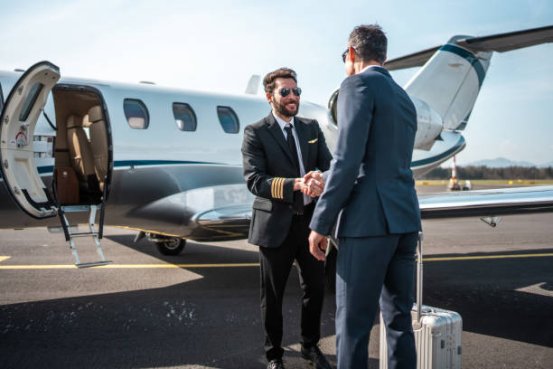What You Need to Know About the Cost of Private Jets
Private jet travel offers unmatched convenience and luxury, but costs vary widely depending on aircraft type, distance, and additional services.
Private jet travel offers unmatched convenience and luxury, but costs vary widely depending on aircraft type, distance, and additional services.

What Defines a Private Jet?
A private jet is an aircraft intended for exclusive use by individuals, families, or small groups, providing a travel experience beyond commercial flights. Key benefits include flexible departure times, access to smaller airports, and premium onboard amenities. Jets differ in size and range—from light, short-range jets for regional trips to heavy, long-range jets suitable for international travel, accommodating both personal and business requirements.
Types of Private Jets and Their Uses
| Jet Type | Passenger Capacity | Range (Miles) | Typical Use |
| Light Jets | 4–8 | 1,500–2,000 | Short-haul regional flights, business trips |
| Midsize Jets | 6–10 | 2,000–3,000 | Longer regional or cross-country flights |
| Super Midsize Jets | 8–12 | 3,000–4,000 | Cross-country and transcontinental travel |
| Heavy Jets | 10–18 | 4,000–7,000 | International long-haul flights |
Choosing the appropriate jet depends on passenger count, flight distance, and desired amenities such as Wi-Fi, catering, or in-flight entertainment.
Fuel Costs: A Major Factor
Fuel represents one of the largest expenses in private jet travel. Consumption varies by jet size: light jets use roughly 134 gallons per hour, midsize jets 200–300 gallons, and heavy jets over 500 gallons per hour. With 2023 average jet fuel prices around $6 per gallon, a long-haul flight can cost tens of thousands in fuel alone. Seasonal changes, global oil prices, and geopolitical factors further influence fuel costs.
Seasonal Variation in Pricing
Demand fluctuations impact pricing throughout the year. Peak travel periods, including holidays and summer months, can raise hourly rates by 20–30%, while off-peak months like January, February, and September often allow for lower costs. Flexible travel dates can significantly reduce expenses.
Aircraft Type and Cost Considerations
Several factors affect total costs:
Passenger Count
Larger groups typically require midsize or heavy jets, increasing fuel and operational costs.
Flight Distance
Longer trips need aircraft with extended range, which are more expensive to acquire and maintain.
Amenities and Customization
Services like Wi-Fi, entertainment, and gourmet catering add to overall costs.
Additional Costs
Beyond the base hourly rate, other fees can increase expenses:
Landing and Handling Fees
Vary by airport, aircraft size, and location.
Crew Costs
Pilots and attendants may need accommodations, per diems, and additional compensation for multi-day trips.
Weather-Related Fees
De-icing or other winter procedures can add to operational costs.
Maintenance and Cleaning
Premium jets require regular upkeep and professional cleaning.
Membership Programs and Fractional Ownership
Frequent flyers can reduce costs through specialized programs:
Jet Cards
Prepaid flight hours at fixed rates for predictable budgeting.
Fractional Ownership
Shared ownership with guaranteed hours, ideal for regular travelers seeking flexibility and premium access.
Occasional travelers may find these upfront investments costly.
Market Dynamics and Pricing Trends
Private aviation costs are influenced by competition and demand:
Dynamic Pricing Models
Rates adjust based on availability, demand, and competitor pricing.
Promotions and Discounts
Operators offer incentives during off-peak seasons or last-minute bookings.
Tips to Reduce Private Jet Costs
Book in Advance
Early reservations often secure better rates.
Use Empty Leg Flights
Discounted one-way trips when jets return to base.
Avoid Peak Seasons
Travel during off-peak months to save.
Compare Providers
Evaluate multiple operators for the best value and service.
Frequently Asked Questions
Q1: How much does a private jet cost per hour?
Rates range from $2,000 to $10,000 per hour depending on jet type, range, and onboard services.
Q2: Are private jets environmentally sustainable?
Private jets have higher carbon footprints per passenger, though some operators offer carbon offset programs.
Q3: Can pets travel onboard?
Yes, most operators allow pets with advance arrangements; policies and fees vary.
Q4: What is an empty leg flight?
A discounted one-way trip when a jet repositions to its home base or for another flight.
Q5: Are security checks required?
Yes, but they are generally faster and less invasive than commercial procedures, offering more privacy and convenience.
Conclusion
Private jet travel provides luxury, efficiency, and flexibility but comes with substantial costs influenced by jet type, fuel consumption, seasonal demand, and additional fees. Strategic planning, early booking, membership programs, and discounted flights help optimize costs while enjoying premium travel benefits. Always verify pricing directly with operators for accurate, current information.
References
National Business Aviation Association (NBAA)
Federal Aviation Administration (FAA)
Private Jet Charter Companies (e.g., NetJets, Flexjet)
Aviation Industry News (Aviation Week)
